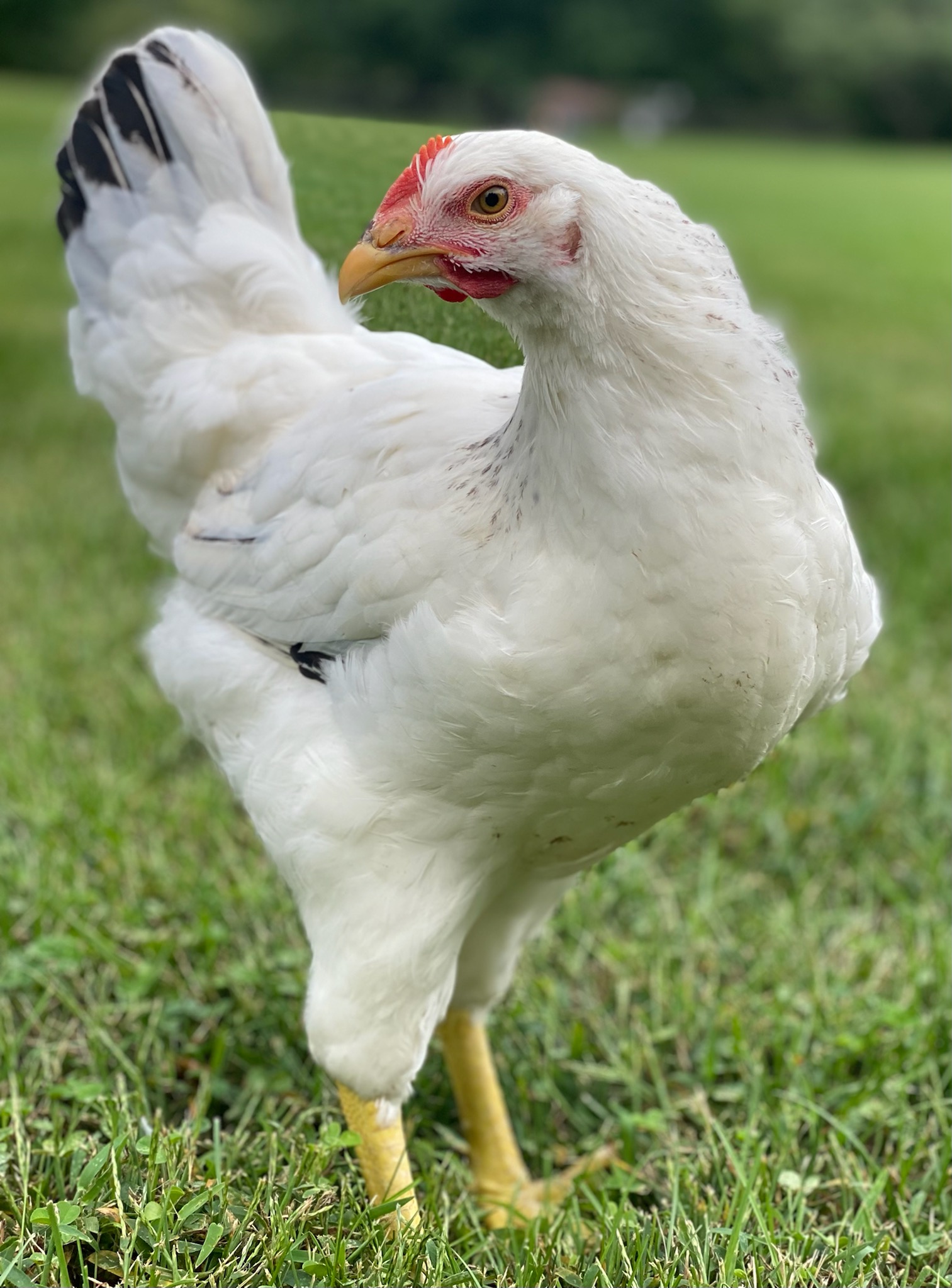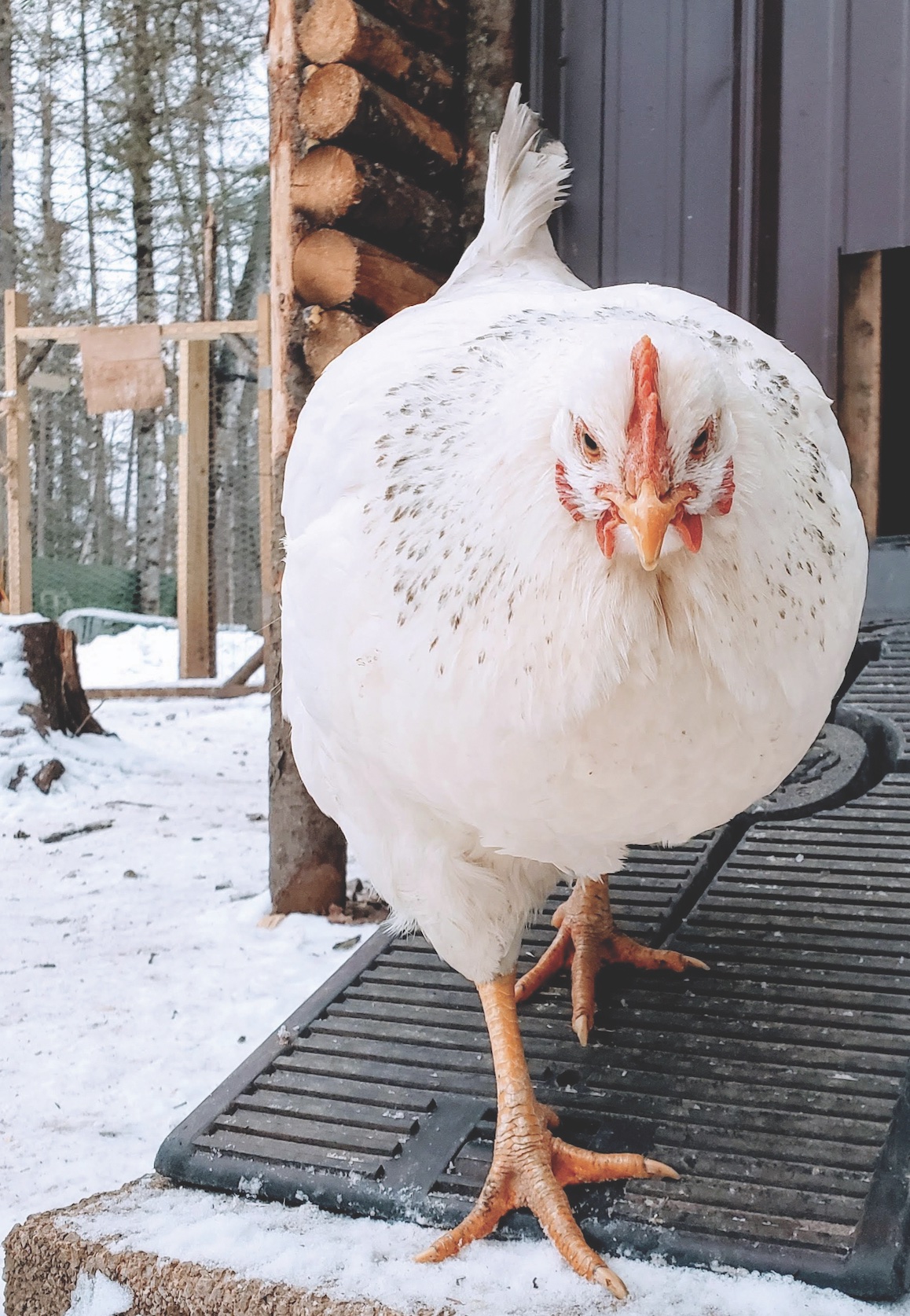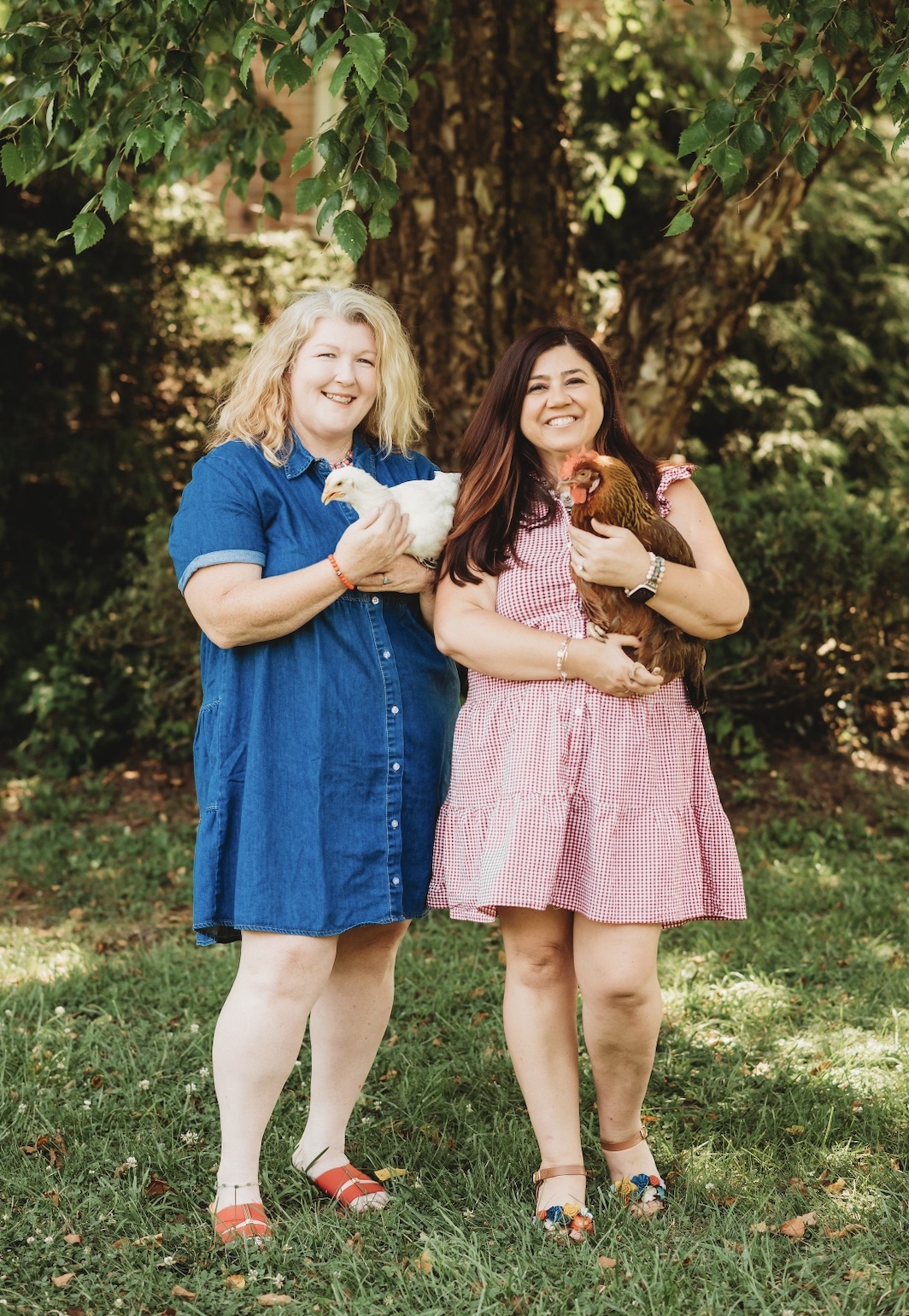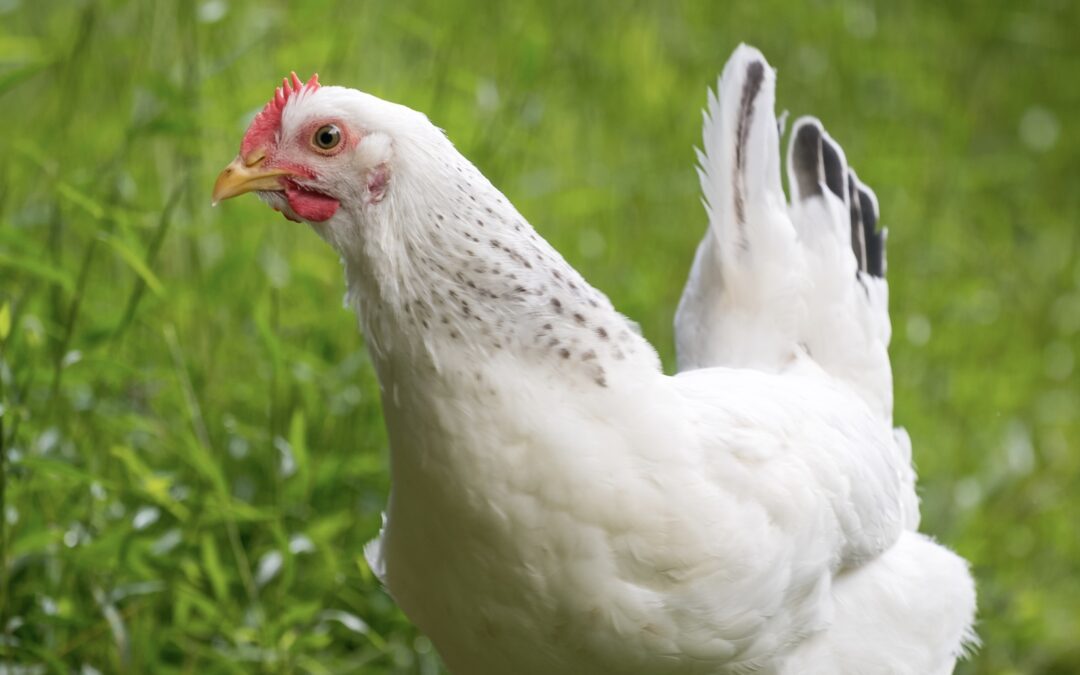What are you looking for in a chicken? Are you looking for a friendly breed that is an excellent layer? A hardy, dual purpose homestead chicken? Pretty enough to be a show bird, and fancy enough for a chicken lady’s back yard? A good forager who will turn over your compost pile? An American Heritage breed? Well, we have the breed for you – a chicken that checks off every one of these boxes. Allow us to introduce you to the Delaware!
Delaware Heritage Breed Chickens Basic Breed Information
The Delaware is a standard size chicken with classic good looks. They’re almost completely white, except for some lighter colored – almost silver gray – broken barring on their necks, tail feathers, and a bit of color on the ends of wing feathers. They look a bit like a lighter version of the Columbian pattern you see on Light Brahmas and Sussex. They have yellow legs and feet, moderately sized straight combs, and red ear lobes. They’re big, with long backs and deep breasts. Weights average around 8 lbs. for roosters and 6 lbs. for hens.
The Livestock Conservancy currently lists the Delaware in the “Watch” category on the Conservation Priority List. The breed was accepted by the American Poultry Association and first appeared in the Standard of Perfection in 1952. They’re friendly with people, and do make excellent show birds. Their friendliness extends to other chickens, though they are not pushovers. When your breed lines come from Barred Rocks and New Hampshires, chances are you won’t be on the bottom of the pecking order.

History of the Delaware Breed
The Delaware was developed in the Indian Head area on the eastern shore of Delaware state in the 1940s. At the time, chicken breeding was largely focused on developing chickens for large scale egg and meat farming, or rapidly growing small scale industrial food production. After the Second World War, hybrid chickens would begin replacing Heritage breeds. However, in the early 1940s, breeders were still experimenting with lines that would give them larger and faster growing dual purpose chickens.
George Ellis, a Delaware man and the owner of the Indian River Hatchery, was working on a similar breeding program when he developed the Delaware chicken. Ellis was crossing Barred Plymouth Rock roosters with New Hampshire hens. He noticed that some of the offspring were white, with silvery broken barring on their feathers. He selected the best of those white birds and began breeding them together. Eventually, these lines bred true, and were established as a new distinct breed. Ellis originally called the breed Indian Rivers, but the name was changed to Delaware chickens early in their existence.
Delaware Heritage Chickens | Unique Barring Genetics
The beautiful silvery broken barring on the Delaware hen’s neck feathers, and the cockeral’s neck and tail feathers, is a quirk of their parents’ genetic makeup. The Barred Rock rooster carries the gene for barring. The gene actually causes incomplete color on a feather, producing the appearance of bars or stripes. In the Delaware, the barring process is incomplete because of their dominant white/silver gene. It causes the bars on their neck feathers to be even more broken as well as light gray/charcoal in color, instead of deep black. This unique genetic mix is what gives the Delaware their beautiful appearance.

Delaware Heritage Breed Chickens | Laying Statistics
The Delaware is more than just a pretty bird. They grow and mature quickly, making them an excellent choice as a dual purpose homestead breed. If you’re looking for good layers, the Delaware hen does not disappoint. At the height of her laying, she will produce an average of 250-280 large brown eggs per year. We’ve heard that they can produce 300+, but this doesn’t seem to be the rule, just some extraordinary individual hens. The pullets start laying eggs at about 6 months old. Hens will often go broody thanks to their Heritage instincts, and can happily raise a clutch of chicks. This is an important quality for someone brooding chicks off grid, or for those trying to avoid electric incubators.
Delaware Heritage Breed Chickens | Ideal Living Conditions
Having evolved in the Mid-Atlantic portion of the US, with its hot, humid summers and cold winters, Delawares are fairly well-adapted to a wide range of climates and temperatures. Their tight feathering and large body mass keep them comfortable through the winter, though the large combs and wattles on roosters will need frost and freeze protection in northern climates and during excessive cold snaps. They are also reasonably heat tolerant. Their white coloring helps to reflect the sun. Be sure to give them plenty of shade and cool water to help them deal with high summer temperatures. However, they are large chickens, so coop fans during a heat wave can be a lifesaver for them.
While your Delaware chickens can handle confinement in a large run, they are active, curious, enjoy foraging. They’re a great help in the spring garden, weeding and turning over garden beds, and keeping your compost pile turned year round. If you live in an area with heavy predator pressure, free ranging them for a couple of hours or so a day will keep them happy. Delawares are bright white and highly visible to predators, especially raptors and other aerial hunters, so we supervise their free range time. Making sure they have plenty of places to take cover is important.

Delaware Heritage Breed Chickens | A Winning Personality
If the above reasons aren’t enough to convince you that the Delaware has a place in your flock, consider our favorite thing about them — their personality! These are great birds for a family, and ideal for a 4-H project. They are curious, chatty, and enjoy hanging out with their people. They’re smart, but not too smart. They won’t be the masterminds who lead a jailbreak, but they’ll be right behind the perpetrator. They more than earn their keep as a homestead breed. They’re great layers, work well in a mixed flock, and they are extremely photogenic! In other words, they’re also perfect for the backyard chicken lady who likes to show off her birds on social media.

Holly Callahan-Kasmala grew up as a 4-H kid on a small horse farm. She has been keeping chickens for more than 20 years, and is passionate about Heritage chickens and helping people find the right breed for their needs. Holly has an MA in History, and is a long-time fiber artist/teacher. In addition to keeping Heritage breed chickens and rare breed sheep, she also grows heirloom cotton, dye plants, and all kinds of heirloom vegetables, fruit, and flowers on her small Maryland farm. She is the creator and co-host of Coffee with the Chicken Ladies Podcast.
Chrisie DiCarlo is a retired veterinary technician with a passion for helping people care for their poultry. During her 15 years in the field, she managed a technical trauma nursing care team in a busy urban veterinary hospital ER. She gave up her career to be a stay-at-home mom to her two amazing daughters. Chrisie has been keeping chickens for more than 7 years. She also loves growing herbs, fruit, and flowers on her small Maryland farm. She is the creator and co-host of Coffee with the Chicken Ladies Podcast.
Catch up on episodes of Coffee with the Chicken Ladies Podcast, stay up to date on their website, and follow along on social media.
Feature photo of Apple Blossom the Delaware pullet courtesy of Holly Callahan-Kasmala.
Photo of Rita the Delaware pullet courtesty of Chrisie DiCarlo.
Photo of a Delaware in the snow courtesy of Troy Liniarski.
More About Delaware Chickens
If you’re interested in adding Delawares to your flock, you can order chicks from Murray McMurray Hatchery’s excellent lines, as we have done. If you want to continue learning more about this special breed, check out Episode 72 of the podcast, Coffee with the Chicken Ladies.

